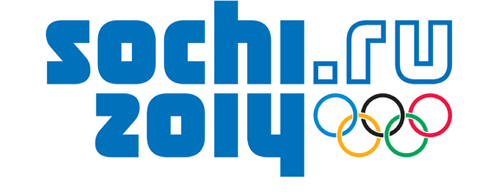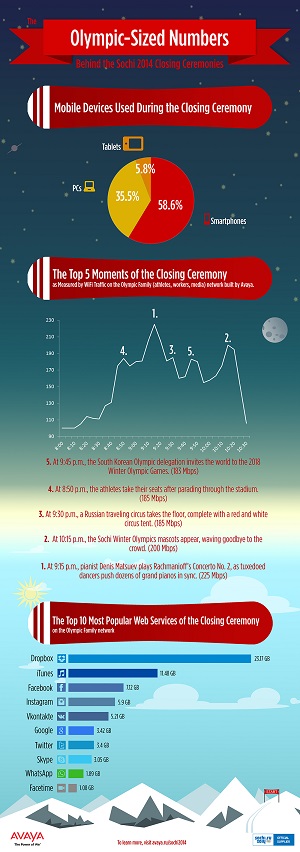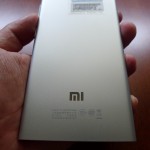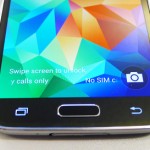
When tens of thousands of athletes, fans, media, officials and volunteers descended on Sochi for the 2014 Olympic Winter Games last month, the organisers faced a considerable challenge: to ensure a reliable and efficient network experience to match a world-class event.
It took 18 months leading up to the event for network equipment vendor Avaya to develop and deploy 2,500 wireless access points across all venues, including Olympic Villages, competition venues, data centres and more.
One of the upsides of this deployment, other than smooth network performance, was Avaya’s opportunity to measure when bandwidth usage peaked during the closing ceremony. As you’ll see in the infographic below, the pianist Denis Matsuev’s performance took the top spot by eating up 225Mbps.
Unsurprisingly, smartphones were the most popular devices during the ceremony, accounting for 58.6 percent of all devices tracked. Tablets, on the other hand, only saw 5.8 percent of usage. Evidently, Olympic goers were sensible enough not to block the view of others by trying to photograph the ceremony with their iPads.
Of all the apps used during the ceremony, social media and communication apps such as Facebook, Twitter, and Skype took up eight of the top ten most popular Web services during the closing ceremony.
They did not, however, clinch the top two spot, which belonged to Dropbox and iTunes respectively. Seemingly curious at first glace, Dean Frohwerk, Avaya’s chief network architect, suggests that this may be because of users syncing content to the respective clouds. Journalists sending content back to their newsrooms come to mind.
Click on the thumbnail below (or right-click and open in a new tab) for the full infographic!







